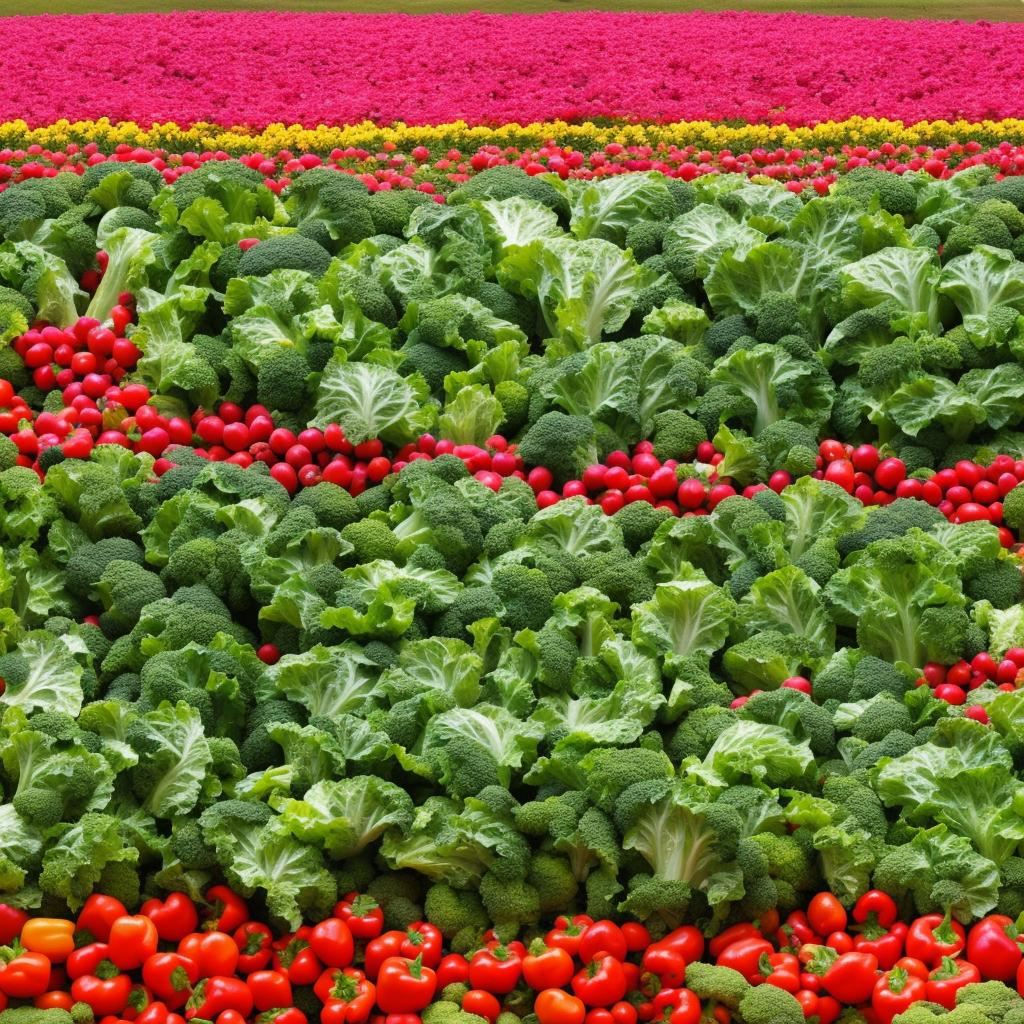Have you ever dreamed of plucking fresh tomatoes, crisp lettuce, and vibrant carrots straight from your own backyard? Starting your own vegetable garden may seem like a daunting task, but with the right guidance and a sprinkle of patience, you can turn that dream into a reality. In this article, we will explore the essential steps and tips to help you embark on your very own journey to becoming a green-thumbed gardener.
Table of Contents
- Choosing the Perfect Location for Your Garden
- Selecting the Best Vegetables to Grow
- Preparing the Soil for Your Vegetable Garden
- Implementing Proper Watering and Maintenance Techniques
- Q&A
- To Conclude
Choosing the Perfect Location for Your Garden
When it comes to starting your own vegetable garden, one of the most important decisions you’ll have to make is choosing the perfect location for it. The right location can make all the difference in the success of your garden, so it’s important to take the time to carefully consider your options. Here are some tips to help you choose the best spot for your garden:
- Sunlight: Make sure your garden gets plenty of sunlight, ideally at least 6-8 hours a day. Most vegetables need a lot of sun to thrive, so choose a spot that isn’t shaded by buildings or trees.
- Water: Your garden will need easy access to water, so pick a location that is close to a water source or can be easily reached with a hose. Consider the drainage of the area as well to prevent waterlogging.
- Soil Quality: Test the soil in different areas of your yard to determine which spot has the best quality for gardening. Look for well-draining soil that is rich in nutrients for your vegetables to grow healthy.
| Location | Sunlight | Water Access | Soil Quality |
| Backyard | 8 hours | Easy access | Rich and well-draining |
| Front Yard | 6 hours | Close to a water source | Needs improvement |
By considering these factors and choosing a location that meets the needs of your vegetable garden, you’ll be well on your way to a successful growing season. Remember to also consider factors such as proximity to your home, protection from wildlife, and ease of maintenance when selecting the perfect spot for your garden.
Selecting the Best Vegetables to Grow
When starting your own vegetable garden, it’s important to carefully consider which vegetables you want to grow. Not all vegetables thrive in every climate or soil type, so it’s crucial to choose ones that will do well in your specific area. Here are some tips on :
- Consider your climate: Some vegetables, like tomatoes and peppers, prefer warmer climates while others, like lettuce and spinach, do well in cooler temperatures.
- Think about your soil: Make sure to choose vegetables that will grow well in the type of soil you have. For example, root vegetables like carrots and potatoes do best in loose, well-draining soil.
- Choose vegetables you actually enjoy eating: There’s no point in growing vegetables that you won’t eat. Select ones that you and your family will enjoy harvesting and eating fresh from the garden.
By carefully considering these factors, you can ensure a successful and bountiful vegetable garden that will provide you with fresh, delicious produce all season long.
Preparing the Soil for Your Vegetable Garden
One of the most important steps in starting your own vegetable garden is preparing the soil. The quality of your soil will directly impact the health and success of your plants. Here are some tips to help you get your soil in top shape:
- Test Your Soil: Before you start planting, it’s a good idea to test your soil to determine its pH levels and nutrient content.
- Clear the Area: Remove any weeds, rocks, or debris from the area where you’ll be planting your garden to ensure optimal growing conditions for your vegetables.
- Add Organic Matter: To improve soil structure and fertility, incorporate organic matter such as compost, manure, or dried leaves into the soil.
| Tip: | Consider cover cropping during the off-season to improve soil health and prevent erosion. |
By taking the time to properly prepare your soil, you’ll be setting your vegetable garden up for success. Healthy soil will lead to healthy plants, which in turn will yield a bountiful harvest of fresh, delicious vegetables for you to enjoy.
Implementing Proper Watering and Maintenance Techniques
When it comes to maintaining a successful vegetable garden, proper watering and maintenance techniques are essential. One important aspect to consider is the watering schedule. Vegetables typically require about 1-2 inches of water per week, so it’s crucial to monitor soil moisture levels regularly. To ensure even watering, consider using a soaker hose or drip irrigation system. This will help prevent over or under-watering, which can lead to stunted growth or disease.
Additionally, it’s important to regularly check for pests and diseases in your vegetable garden. Keep an eye out for any signs of damage, such as chewed leaves or wilting plants. If you notice any issues, take immediate action to prevent further damage. This may include using natural pest control methods or removing infected plants to prevent the spread of disease. By implementing these proper watering and maintenance techniques, you can help ensure a healthy and thriving vegetable garden.
Q&A
Q: Why should I start my own vegetable garden?
A: Starting your own vegetable garden allows you to have fresh, organic produce right at your fingertips and can save you money on grocery bills.
Q: What are some basics I need to know before starting a vegetable garden?
A: Before starting a vegetable garden, it’s important to consider factors such as sunlight, soil quality, and water availability in your chosen gardening space.
Q: Do I need a lot of space to start a vegetable garden?
A: You don’t necessarily need a large amount of space to start a vegetable garden. Many vegetables can be grown in containers or small raised beds if space is limited.
Q: What are some easy vegetables to grow for beginners?
A: Some easy vegetables to grow for beginners include tomatoes, lettuce, zucchini, and radishes. These vegetables are low-maintenance and can thrive in a variety of garden environments.
Q: How can I prevent pests from ruining my vegetable garden?
A: To prevent pests from damaging your vegetable garden, consider using natural repellents such as companion planting, neem oil, or homemade pesticide sprays.
Q: How often should I water my vegetable garden?
A: The frequency of watering your vegetable garden will depend on factors such as weather conditions and soil type. In general, it’s best to water deeply and infrequently to promote healthy root growth.
To Conclude
In conclusion, starting your own vegetable garden is a rewarding and fulfilling experience that allows you to connect with nature, nourish your body, and save money on grocery bills. By following the tips and guidelines outlined in this article, you’ll be well on your way to creating a thriving garden that yields a bountiful harvest. So grab your gardening gloves, roll up your sleeves, and get ready to enjoy the fruits (and vegetables) of your labor. Happy gardening!





